Characiformes: Characins
Most of these species are carnivorous, and have an adipose fin as well. They tend to be similar in body shape to Cypriniformes.
Citharinoidei
This suborder contains two families, and is notable for its bicuspid teeth (similar to molars with two cusps, or raised areas).


Distichodontidae: Distichodontids
According to Nelson, there are two "groups" in this family. The first group tend to be herbivores or "micropredators," and do not have a protractile upper jaw. The other group tends to have a skinnier body, a protractile upper jaw, and feeds on the fins or entire bodies of fishes.
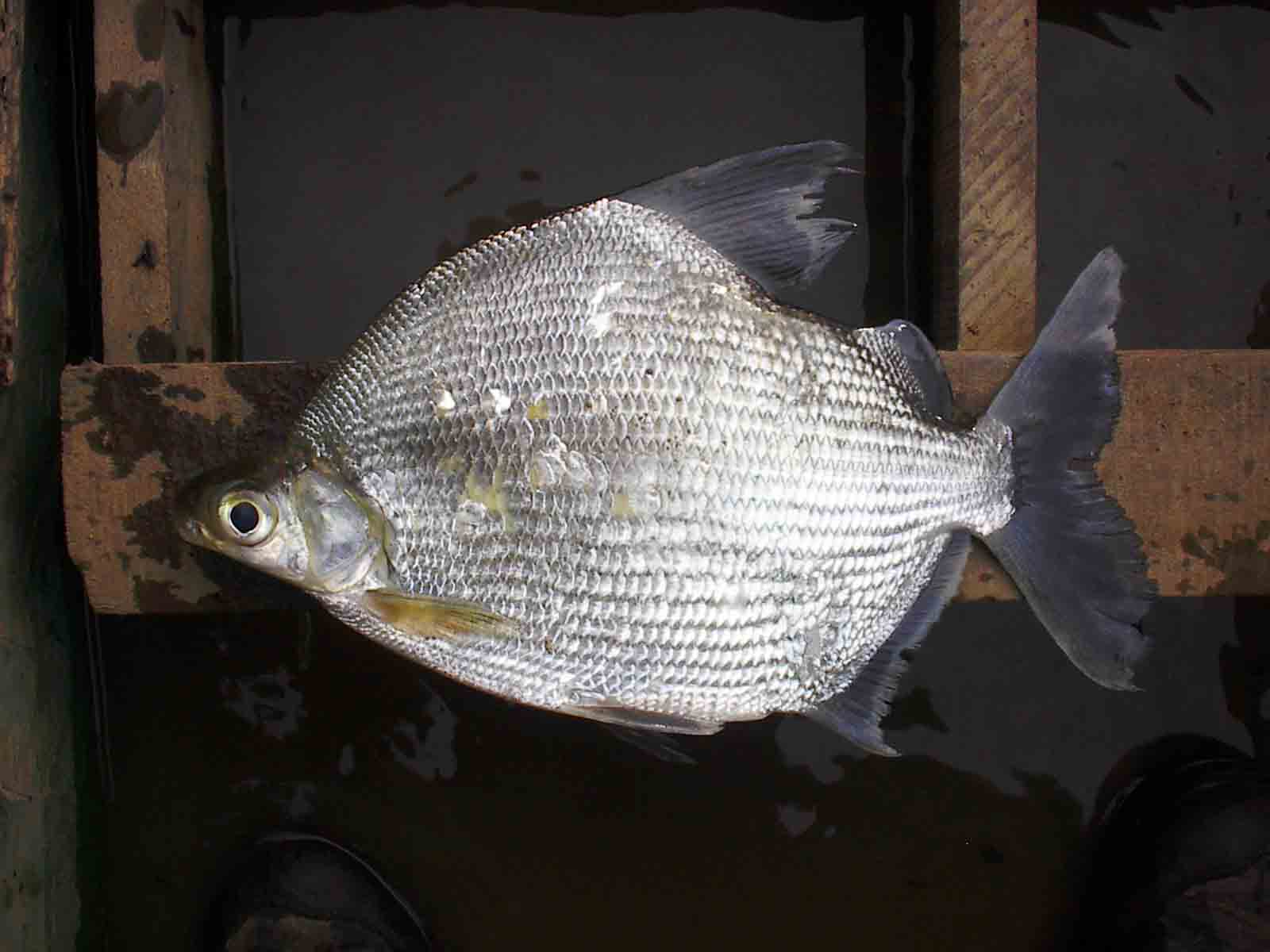
Citharinidae: Citharinids
These fishes have a taller body and a reduced maxilla. They are also known as lutefishes (not because of their musical abilities).
Characoidei
No details exist, so we're going to pretend that they all have a fear of heights.
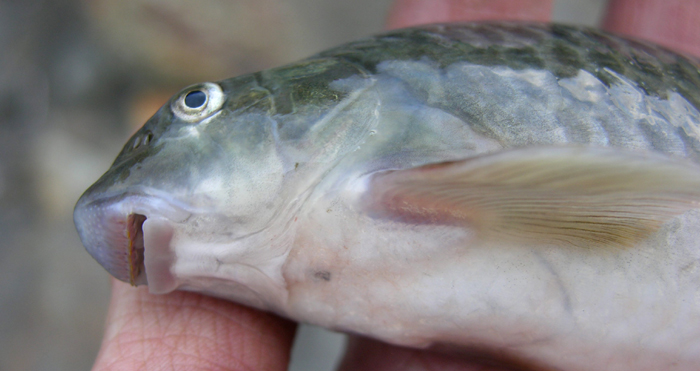
Parodontidae: Parodontids
These fishes have a ventral mouth and feed by scraping algae off of rocks. Nelson describes them as peculiar, for unknown reasons (maybe they're kleptomaniacs).

Curimatidae: Toothless Characiforms
As you can tell by the name, they lack jaw teeth! However, these fishes utilize a tricky loophole, and maintain their pharyngeal teeth! Tricky tricky!
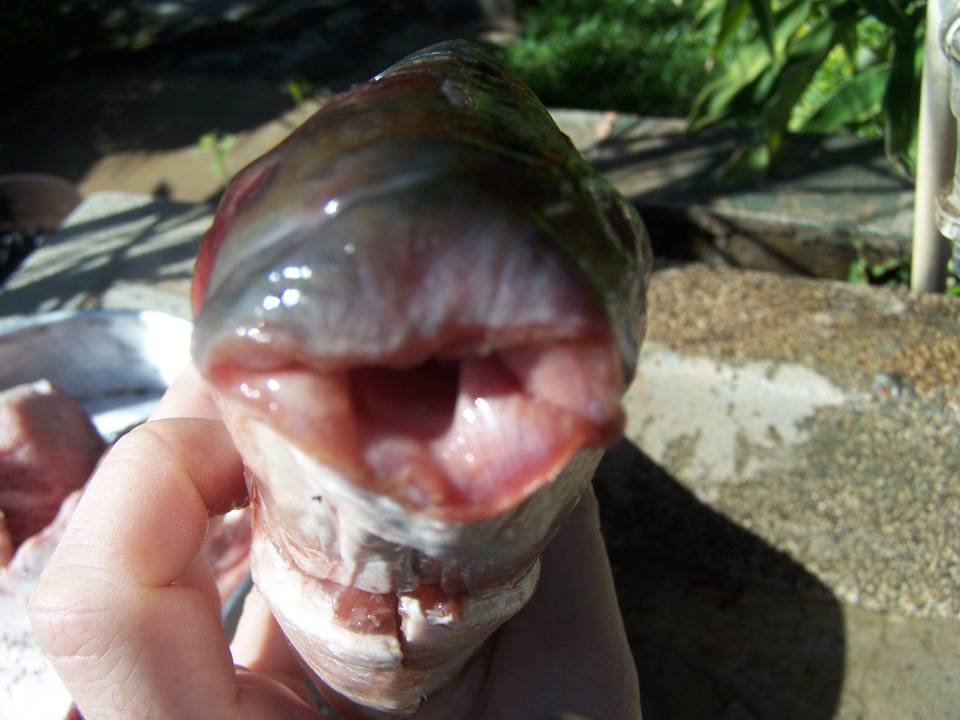
Prochilodontidae: Flannel-Mouth Characiforms
No, this fish isn't overly-prepared for Flannel Fridays! However, it does look like it received collagen injections, because it has overly large lips used for suction.
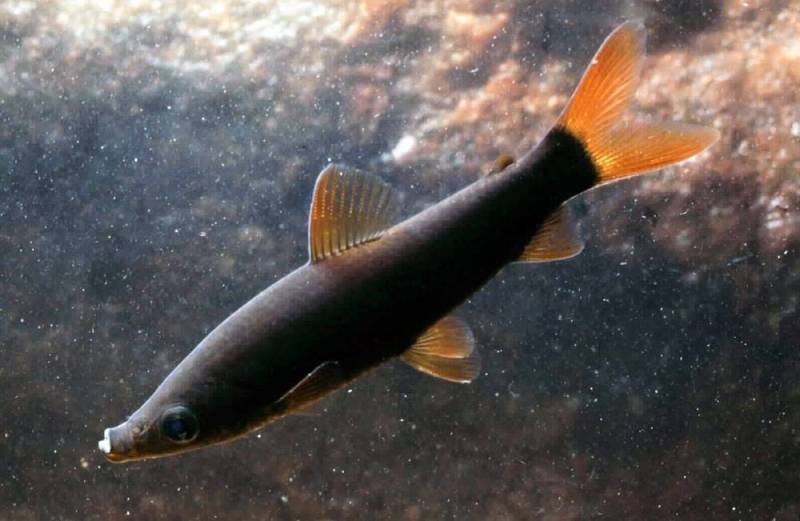
Anostomidae: Toothed Headstanders
Although only having a few teeth, the ones they have are enlarged. Often, the mouth is turned upwards, which is where the scientific name comes from. The second half of the common name originates from their habit of swimming with their heads down at a 45 to 90 degree angle from the bottom.
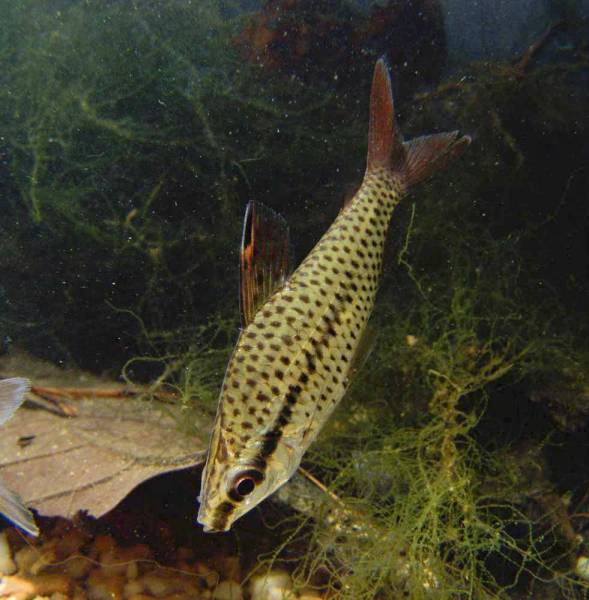
Chilodontidae: Headstanders
This family engages in similar behavior to the Anostomids, but are apparently less "toothy." The teeth are supposedly movable in the jaw. Another feature that identifies this family is that the 6th lateral line scale is much smaller than the other scales.

Crenuchidae: South American Darters
Not to be confused with the darters in Percidae, this family is distinguished by a couple minor cranial features. Make sure you know them, because they'll be on the exam.
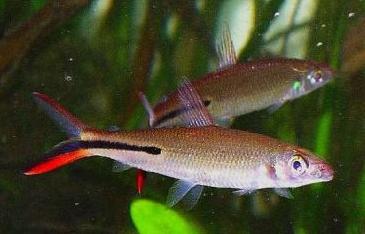
Hemiodontidae: Hemiodontids
These fishes have a well-developed adipose eyelid and a fusiform shape. Almost all species lack teeth in the lower jaw, and most have a round spot on the midbody.
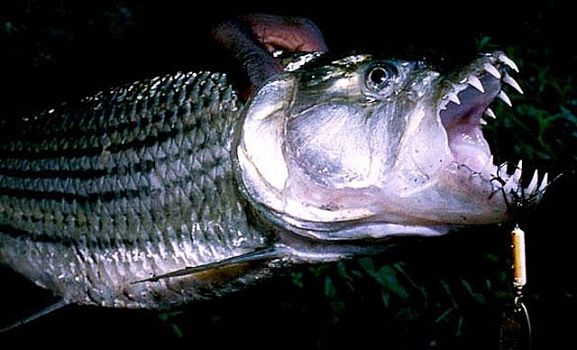
Alestiidae: African Tetras
Formerly in Characidae, this family is only found in Africa. A couple notable members:
- Robber Tetras (Brycinus and Rhabdalestes): Their common name comes from their bold reputation and penchance for bold, carnivorous feeding.
- Goliath Tigerfish (Hydrocynus goliath): One of the largest members of this family, it has very large sharp teeth which it uses to prey on fish and occasionally catch birds in midair, the only freshwater fish known to do so (watch this video).
- Jellybean Tetra (Ladigesia roloffi and Lepidarchus adonis): Interestingly, according to Wikipedia (yes, not completely reliable), these two different monotypic genera have the same common name. Strange!

Gasteropelecidae: Freshwater Hatchetfishes
These fishes have a similar body shape to deepwater hatchetfishes, with a compressed head and a deeply keeled body. They have long, slender pectoral fins with strong muscles, which are used to leap out of the water.
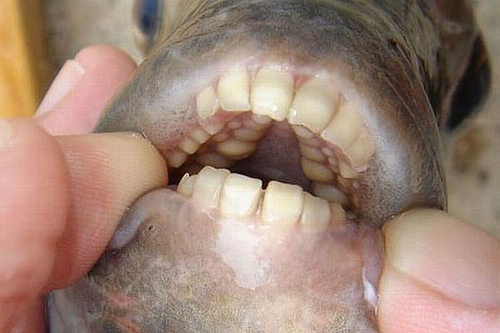
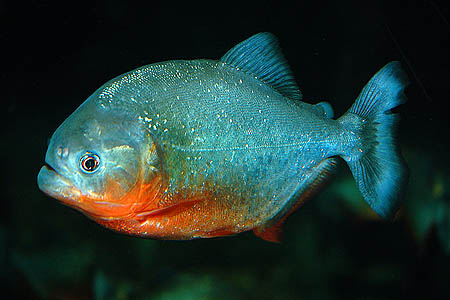
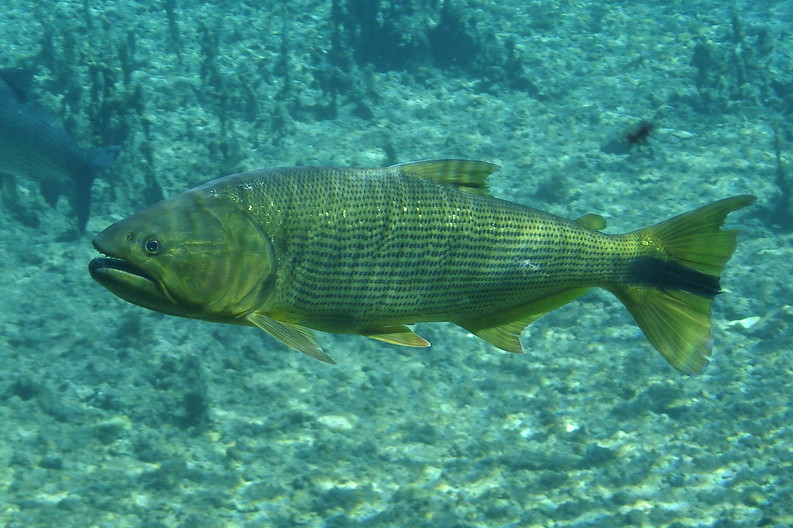
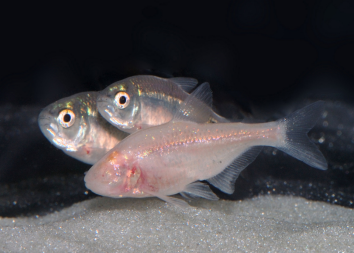
Characidae: Characins
This family is ridiculously huge, and Nelson makes it even larger by including the Serrasalmids (more recent classifications puts them in a different family, but too bad). They're so large, they don't really have any defining characters. So let's look at some individual members!
- Wimple Piranha (Catoprion mento): This specialized piranha feeds on fish scales, which it obtains by forcefully ramming into other fishes and knocking scales loose, while also scraping off scales with its teeth.
- Brycon: This genus is important for seed dispersal, eating the fruit from trees and pooping the seeds out in another location (how great is that?) They have even been known to eat fruit on trees by jumping out of the water.
- Blind Cavefish (Astyanax mexicanus): Interestingly, not all members of this species are blind. Only certain populations that live in caves have lost their eyesight. Even more interestingly, the definition of a species is a population of organisms that cannot interbreed with any other population. Since the blind fish is still part of the species, this means the eyed and eyeless varieties can interbreed! I'm not sure whether the offspring have eyes, though.
- Pacu: This common name can actually refer to fishes in a few different genera. They are recognized by their large, circular shape, and also for their extremely human-like (and unfish-like) teeth. This is because they are herbivorous, and will eat whatever veggies they can get their grubby fishy paws on.
- Cynopotamus: Sometimes known as "river dogs," these fishes have upturned mouths with sharp teeth, similar to the family Cynodontidae.
- X-ray Tetra (Pristella maxillaris): This fish gets its common name because its body is extremely transparent.
- Neon Tetra (Paracheirodon innesi): This popular aquarium fish is recognized by the bright blue and red stripes that run down the side of its body. These two stripes actually disappear while the fish rests, and reappear when it becomes active again.
- Silver Dollar (Metynnis argenteus): This is a common aquarium fish, and gets its name from its rounded shape and silvery collar. It unfortunately cannot be used as currency in most American convenience stores.
- Golden Dorado (Salminus brasiliensis): This large predatory fish gets its name from its golden color. It has a large head, a mouth full of teeth, and a striped body.
- Bucktooth Tetra (Exodon paradoxus): This fish actually has no teeth. Its name must be some sort of sick joke between scientists. How cruel.
- Red-Bellied Piranha (Pygocentrus nattereri): This is what people think of when they hear the word "piranha." They are recognized by their rounded side-view, and a reddish belly in adults. The teeth are tricuspid with the middle cusp being much larger, giving them a triangular look. They are foragers and scavengers, feeding on small plants and animals, but can engage in a feeding frenzy on a larger animal if starving. These fish communicate by producing sounds using the swimbladder as a resonator.
- False Rummynose Tetra (Petitella georgiae): Not to be confused with the "Gin Rummy" Nose Tetra (that's a joke, folks).
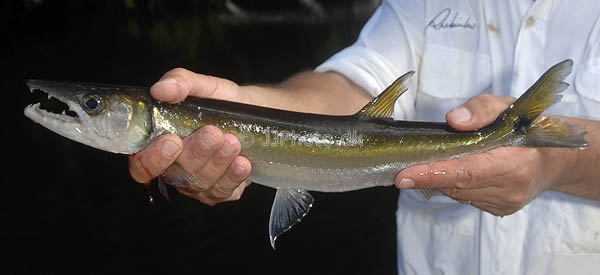
Acestrorhynchidae: Acestrorhynchids
There is only one genus, Acestrorhynchus. These fishes have elongated, pike-like bodies with small scales. They are often known as "freshwater barracudas" for their similar shape, dentition, and dietary habits. However, they only reach 40cm in length.
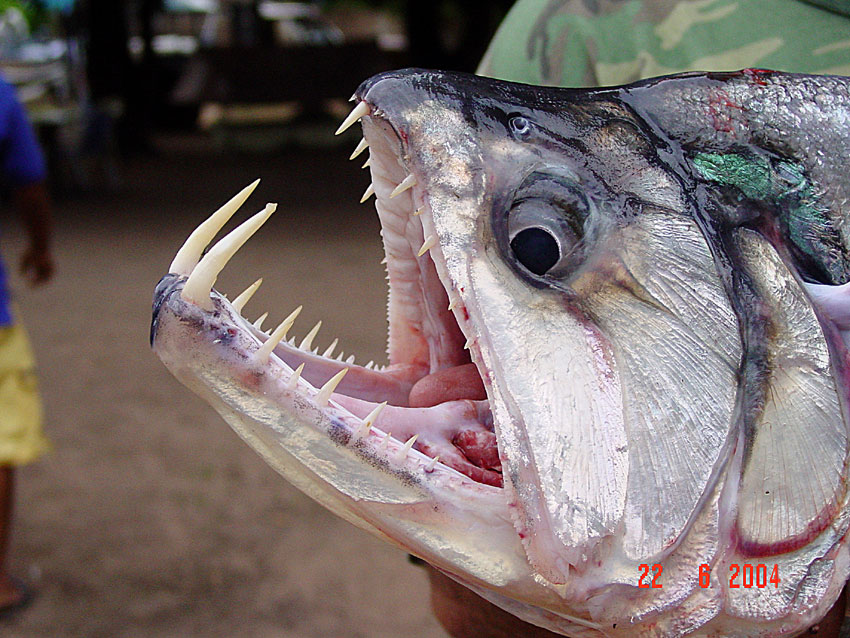
Cynodontidae: Dogteeth Tetras
This family is known for its well-developed canines, giving the fish a look like a two-hole punch. These fishes use their teeth to ambush and impale smaller prey. They have a long, upwards-pointing mouth, and elongated pectoral fins. Two of the largest species are the Payara (Hydrolycus scomberoides) and the Biara (Rhaphiodon vulpinus).
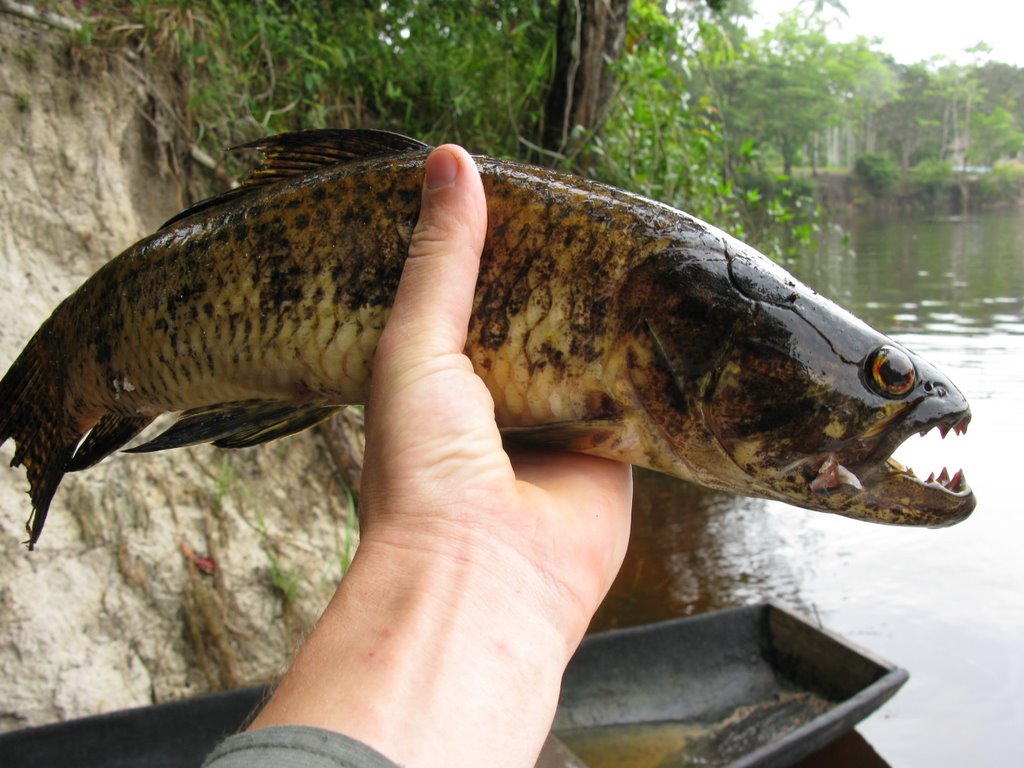
Erythrinidae: Trahiras
These fishes have a similar body plan to the Bowfin (Amia calva), with a cylindrical body shape, a large mouth and lack adipose fins. Some species can breathe air, and there have been reports of individuals walking on land between ponds.
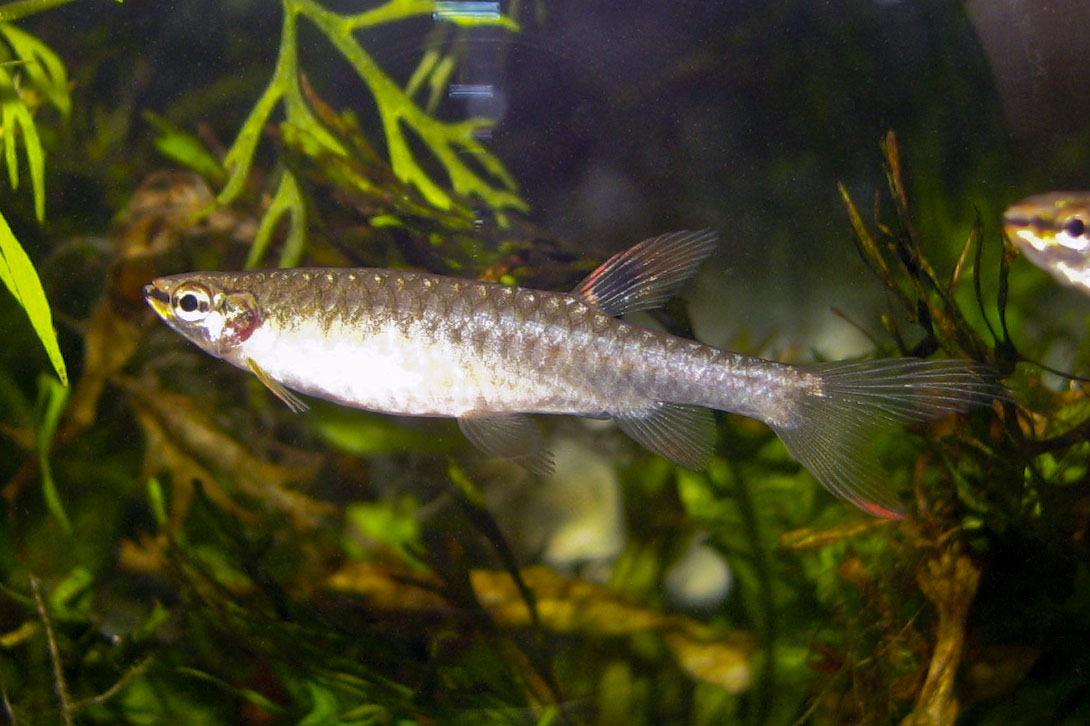
Lebiasinidae: Pencil Fishes
These fishes have small, cylindrical bodies and small mouths. One species, Copeina arnoldi, is known for its unique breeding habits. The male and female gather together beneath an overlying leaf, then simultaneously leap out of the water and suction themselves together to the underside of the leaf. They will fertilize their eggs, which they then glue to the leaf. This is repeated until about 200 eggs have been laid. The male will remain to guard the eggs, occasionally leaping up to splash the eggs with water.

By Rufus46 (Own work) [CC BY-SA 3.0], via Wikimedia Commons
Ctenoluciidae: Pike-Characids
The common name comes from the similarity in body shape to pikes (Esocidae), with the dorsal and anal fins being placed posteriorly on an elongated body. They are also recognizable by their long, upturned mouth, with a slender upper jaw and a lower jaw that often has a rounded tip.
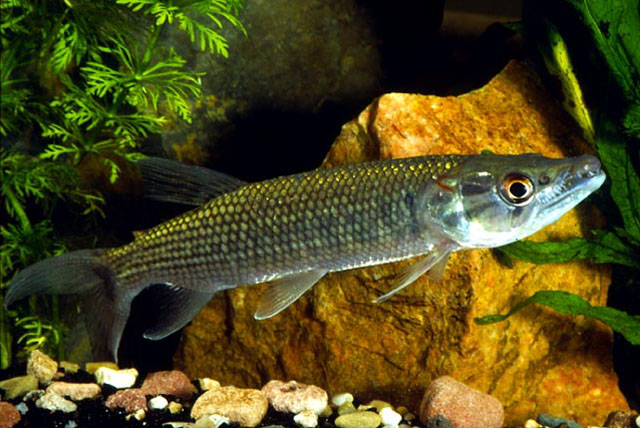
Hepsetidae: African Pikes
There is only one genus Hepsetus. These fishes do not have as elongate a body as the Ctenoluciids, but the dorsal and anal fins are still placed relatively far back on the body. They have a few large canines and some smaller teeth in their mouths. They lay their eggs in a nest of floating foam, which is highly exciting (or so I've been told).